We have forgotten the flocks of passenger pigeons that blotted out the sun, the herds of bison that shook the ground, and the untamed places in which we destroyed them. This is ecological amnesia. The capacity to forget, a fluidity of memory, has dire implications in a world dense with people, all desperate to satisfy their immediate material needs. Yet, the way forward is land and water protection and regeneration, permaculture, and community reconnection with the wild. Following is an excerpt from ethnobotanist Wade Davis’ book, Memory, published in 2018 by the Peter Wall Institute for Advanced Studies at UBC.
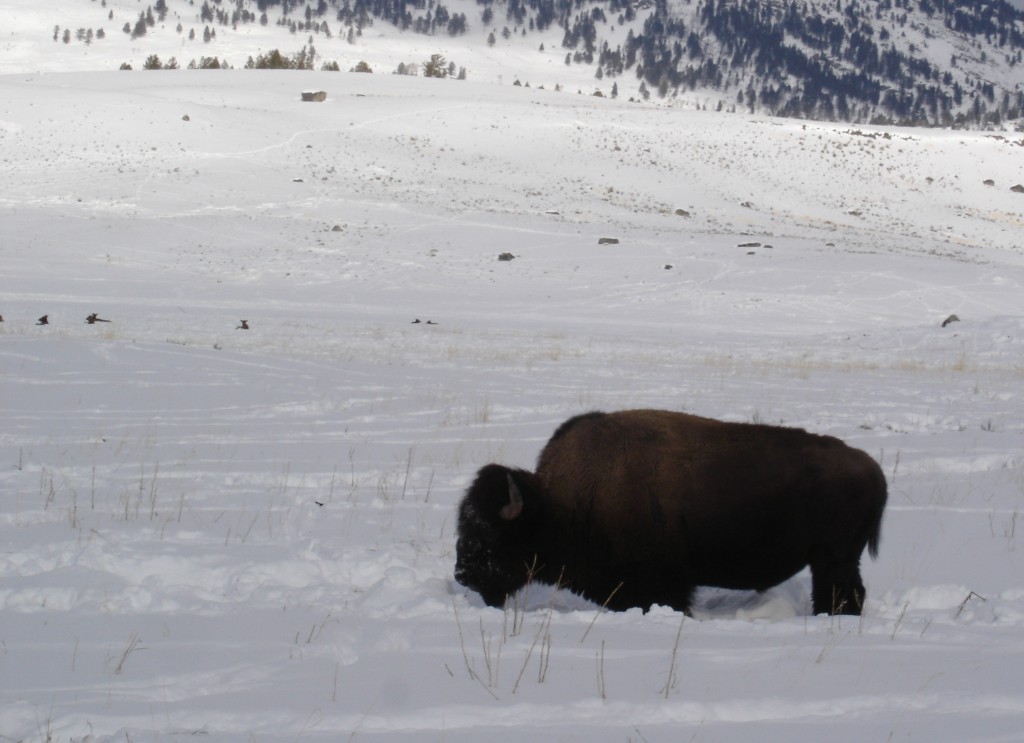

Wade Davis: Life without wild things
By Wade Davis, Published in The Narwhal
Some years ago, I visited two places that in a different, more sensitive world would have surely been enshrined as memorials to the victims of the ecological catastrophes that occurred there. The first was the site of the last great nesting flock of passenger pigeons (Ectopistes migratorius), a small stretch of woodland on the banks of the Green River near Bowling Green, Ohio. This story of extinction is well known. Yet until I stood in that cold, dark forest, I had never sensed the full weight, scale and violence of the disaster.
At one time, passenger pigeons accounted for 40 per cent of the entire bird population of North America. In 1870, when their numbers were already greatly diminished, a single column one mile wide and 320 miles long, containing an estimated two billion birds, passed over Cincinnati on the Ohio River. In 1813, as James Audubon traveled in a wagon from his home on the Ohio River to Louisville, some 60 miles away, a stream of passenger pigeons filled the sky, and the “light of the noonday sun was obscured as by an eclipse.” He reached Louisville at sunset, and the birds continued to come.
He estimated that the flock contained over one billion birds, and it was but one of several columns of pigeons that blackened the sky that day. Audubon visited roosting and nesting sites and found trees two feet in diameter broken off at the ground by the weight of birds. He saw dung so deep on the forest floor that he mistook it for snow. He compared the noise of the birds taking flight to that of a gale, the sound of their landing to thunder.
“Men still live who, in their youth, remember pigeons; trees still live who, in their youth, were shaken by a living wind. But a few decades hence only the oldest oaks will remember, and at long last only the hills will know.”
—Aldo Leopold, “On a Monument to the Pigeon,” 1947
STORY: On Stone Age Skills and Why We Need This Ancient Wisdom
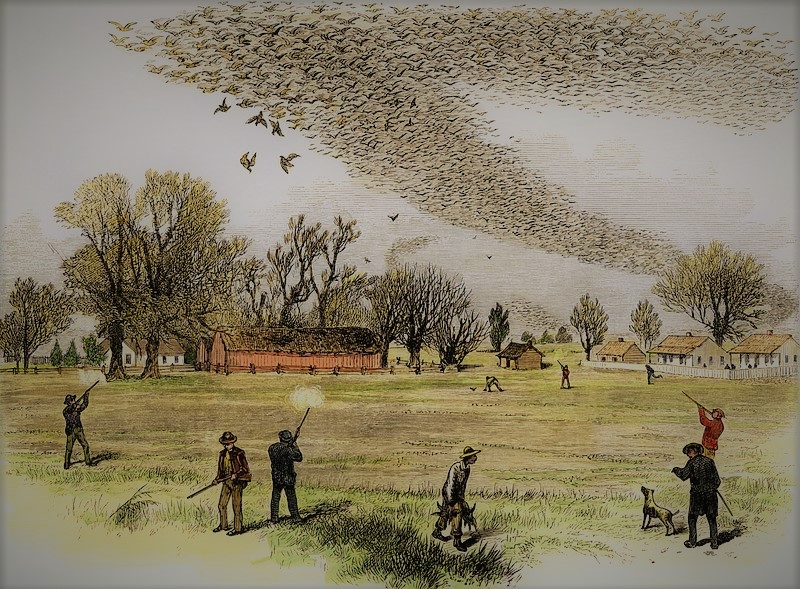

It is difficult now to imagine the ravages that would destroy this creature within 50 years. Throughout the 19th century, pigeon meat was the mainstay of the American diet, and merchants in eastern cities sold as many as 18,000 birds a day. Pigeon hunting was a full-time occupation for thousands of people. A typical shooting club would go through 50,000 birds in a weekend competition. By 1896, there were only a quarter million birds left.
They shot the pigeons and trapped them with nets, torched their roosts, and asphyxiated them with burning sulfur. They attacked the birds with rakes, pitchforks, and potatoes. They poisoned them with whiskey-soaked corn. Learning of some of these methods, Potawatomi leader Pokagon despaired. “These outlaws to all moral sense would touch a lighted match to the bark of the tree at the base, when with a flash—more like an explosion—the blast would reach every limb of the tree,” he wrote of an 1880 massacre, describing how the scorched adults would flee and the squabs would “burst open upon hitting the ground.” Witnessing this, Pokagon wondered what type of divine punishment might be “awaiting our white neighbors who have so wantonly butchered and driven from our forests these wild pigeons, the most beautiful flowers of the animal creation of North America.” — Barry Yeoman, Audubon Magazine
In April of that year, the birds came together for one last nesting flock in the forest outside of Bowling Green. Telegraph wires hummed with the news, and the hunters converged. In a final orgy of slaughter, over 200,000 pigeons were killed, 40,000 were mutilated and 100,000 chicks were destroyed. A mere 5,000 birds survived. On March 24, 1900, the last passenger pigeon in the wild was shot by a young boy. On September 1, 1914, as the Battle of the Marne consumed the flower of European youth, the world’s last passenger pigeon died in captivity.
***
When I left the scene of this final slaughter, I traveled west to Sioux City, Iowa. There, I was fortunate to visit a remnant patch of tall-grass prairie, a 180-acre preserve that represents one of the largest remaining vestiges of an ecosystem that once carpeted large swaths of North America. As I walked through that tired field, my thoughts drifted from the plants to the horizon. I tried to imagine buffalo moving through the grass, the physics of waves as millions of animals crossed the prairie.
As late as 1871, buffalo outnumbered people in North America. In that year, one could stand on a bluff in the Dakotas and see nothing but buffalo in every direction for 30 miles. Herds were so large that it took days for them to pass a single point. Wyatt Earp described one herd of a million animals stretching across a grazing area the size of Rhode Island. Within nine years of that sighting, buffalo had vanished from the plains.
The destruction of the buffalo resulted from a campaign of biological terrorism unparalleled in the history of the Americas. The policy of the federal government of the United States was explicit: exterminate the buffalo and destroy the commissary of the great cultures of the plains. Over 100 million bison were slaughtered. A decade after Native resistance collapsed, the general who orchestrated the campaign advised Congress to mint a commemorative medal with a dead buffalo on one side, a dead “Indian” on the other.
Running Antelope (1821 – 1896), a highly respected speaker and diplomat of the Sioux (Dakota) nation, became weary of the failure of the law and Indian agents to protect Sioux lands and resources. In an interview with the editor of the Bismarck Tribune, Running Antelope said:
“If the present slaughter by the white men continues, buffalo will not last more than two years. If the white men were not permitted to kill the buffalo just for the hides, then they would last several years yet. I think it is a pity that the white men slay the buffalo for their hides and leave the good meat on the grass. The Indians to whom the buffalo belong are poor; if they only were allowed to kill the buffalo they would save every bit of the meat for their families. I have done the best I can for the white men and I do not see why the Great Father cannot do me the favor of stopping the whites from killing our game.” (Bismarck Tribune, February 16, 1883).
STORY: Wolakota Buffalo Range: Bringing Back Tatanka with Wizipan Little Elk
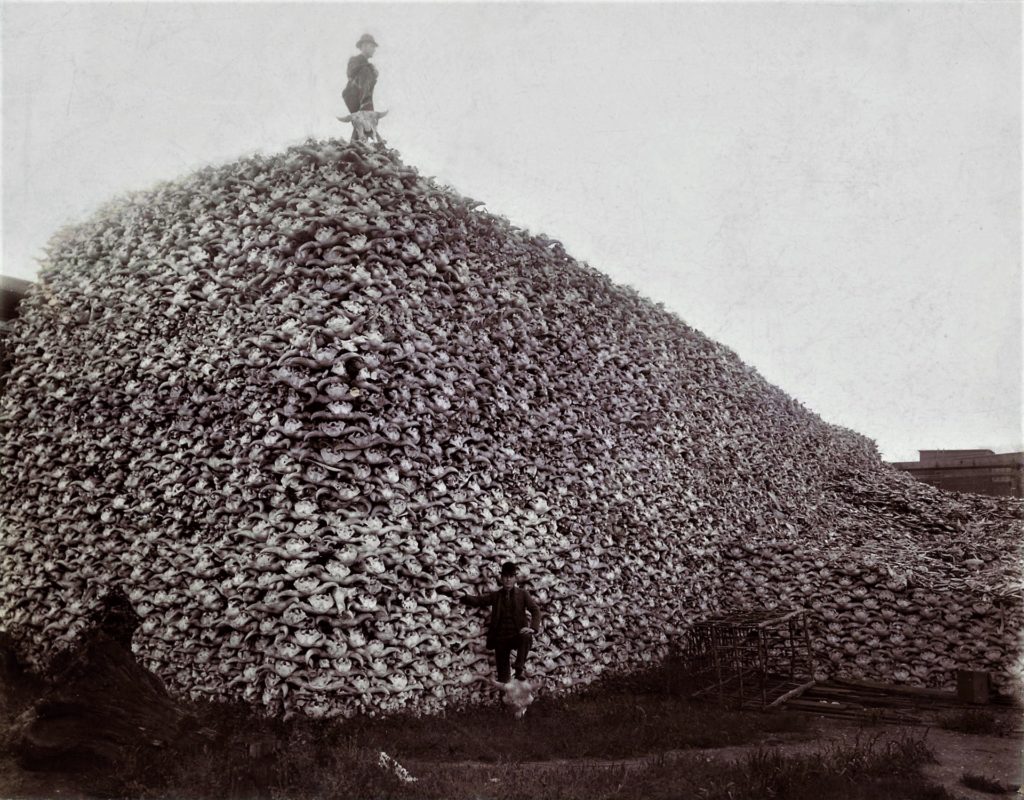

As I thought of this history, standing in that tall-grass prairie, what disturbed me most was the ease with which we have removed ourselves from this ecological tragedy. Today, the good and decent people of Iowa live contentedly in a landscape of cornfields claustrophobic in its monotony.
The era of the tall-grass prairie, like the time of the buffalo, is as distant from their lives as the fall of Rome or the siege of Troy. Yet the terrible events unfolded but a century ago, well within the lifetime of their grandparents. This capacity to forget, this fluidity of memory, has dire implications in a world dense with people, all desperate to satisfy their immediate material needs. Confronted by the consequences of our actions, there is always the path of forgetfulness.
***
Humans, of course, have long impacted their environments. Pre-Columbian peoples deforested much of Andean Peru long before the rise of the Inca. The severely eroded and barren hills of the Loess Plateau were once a flat and fertile plain covered with forests and rich grasslands, the cradle of ancient Chinese civilization. Romans and Greeks over many centuries destroyed the rich forests of Lebanon and virtually all timbered lands surrounding the Mediterranean. The extent of deforestation caused by successive Mayan civilizations in the lowlands of the Peten is only beginning to be fully appreciated. Successive generations of Polynesians exhausted the resources of Rapanui, or Easter Island, literally eating themselves out of house and home.
The story of Easter Island has become an ecological fable because it speaks directly to the fate of the world today. Yet we remain haunted by a capacity to forget that lingers like a vestigial and necrotic appendage on the body of humanity. Perhaps ecological amnesia served our needs in the past, as we gradually degraded the natural world over generations.
But today the time frame has contracted dramatically, even as our capacity to destroy the environment has expanded to an industrial scale, with no place on the planet beyond reach. If the Mediterranean forests fell to the Roman axe over centuries, the landscape of Sarawak, homeland of scores of Indigenous cultures dependent on the forest for their survival, was converted by chainsaw and bulldozer to wasteland in a mere generation. And yet we continue to forget.
How many of us remember, for example, that as recently as the 1920s the Colorado River delta was lush and fertile — a “milk and honey wilderness,” in the words of Aldo Leopold. Today it is a wasteland of barren mudflats, with the river but a toxic trickle in the sand. The Gulf of Alaska once turned a golden hue with the sheer numbers of returning salmon, a sight unlikely to be seen again.
Off the shores of Newfoundland, cod were so abundant that ships with wind in their sails made little progress, blocked by the density of fish in the water. Europe and much of the New World lived on the catch for 300 years. Then, in the years of my youth, factory ships industrialized the fishery and in a single generation reduced the species to a shadow in the sea.
“Within the rise and fall of the great ancient civilizations on Earth are profound lessons that our ancestors are sharing with us. The lessons of [the human destruction of] China’s Loess Plateau show that soil is not simply a medium for our agricultural crops to stand in and that fertility is not simply nitrogen, phosphorous, and potassium to stimulate growth. Organic matter is required to recycle nutrients from one generation of life to the next and microbiologic communities that live in organic soils are required not only to assist in recycling but also to release nutrients from geologic materials and to infiltrate and retain moisture. Understanding that these same organic soils are the second largest carbon sink on Earth after the oceans is to recognize their role in mitigating and adapting to human induced climate changes and how they are of vital importance for our survival and sustainability.” — John D. Liu, Permaculture News
STORY: Ecosystem Restoration: “The Great Work of Our Time” with John D. Liu
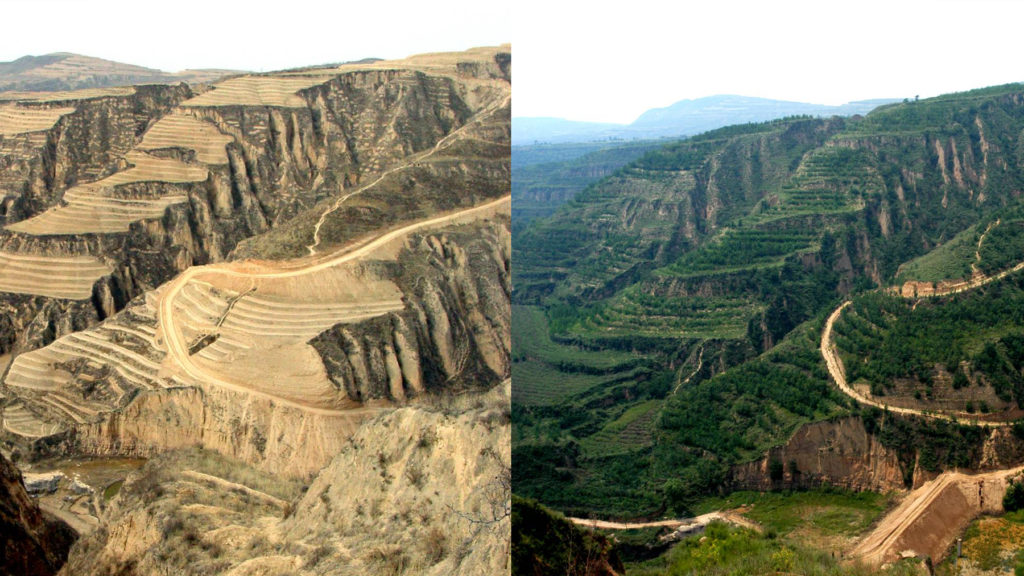

As recently as the 1920s, Haiti was 80 per cent forested. Today, less than two per cent of its forest cover remains. I recall one day walking along a barren ridge with an old man who waxed eloquent as if words alone might squeeze beauty from the desolate valley of scrub and halfhearted trees that reached before us to the horizon. Though witness to an ecological holocaust that had devastated his entire country within a century, he had managed to adorn his life with his imagination.
This capacity was inspiring but also terrifying. People appear to be able to tolerate and adapt to almost any degree of environmental degradation. As the farmers of Iowa today live without wild things, Newfoundlanders survive without cod, and the people of Haiti scratch a living from soil that may never again know the comfort of shade.
***
From a distance, both in time and in space, we can perceive these terrible and poignant events for what they were, unmitigated ecological disasters that robbed us and the future of something unimaginably precious in order to satisfy the immediate mundane needs of the present. The luxury of hindsight, however, does little to cure the blindness with which we today overlook deeds of equal magnitude and folly. In a manner that will be difficult for our descendants to comprehend, we drift towards a world in which people take for granted an impoverished environment, transformed by foolish negligence and reduced by expediency to a shadow of the glory that once was.
In three generations, a mere moment in the history of our species, we have throughout the world contaminated the water, air and soil, driven countless species to extinction, dammed the rivers, poisoned the rain and torn down the ancient forests. As Harvard biologist E.O. Wilson reminds us, this era will not be remembered for its wars or technological advances but as the time when men and women stood by and either passively endorsed or actively supported the massive destruction of biological diversity on the planet.
Given the dire consequences, how might we explain this peculiar and ultimately self-destructive capacity to shed memory and shift our expectations as we adapt to an increasingly impoverished world? Were this to be a fundamental adaptive trait of our species, we would surely find evidence scattered throughout the ethnographic record. But most assuredly we do not.
E.O Wilson on the protection of Half-Earth for biodiversity: “There are ways to stop [mass species extinction] and I think we’re going to have to start talking about big changes in how much of the Earth’s surface we put aside for nature just to keep it from going extinct in a very short period of time. And I’m in a group of scientists working very hard on that part right now.”
STORY: Mass Species Extinction and Wilding the Wilderness
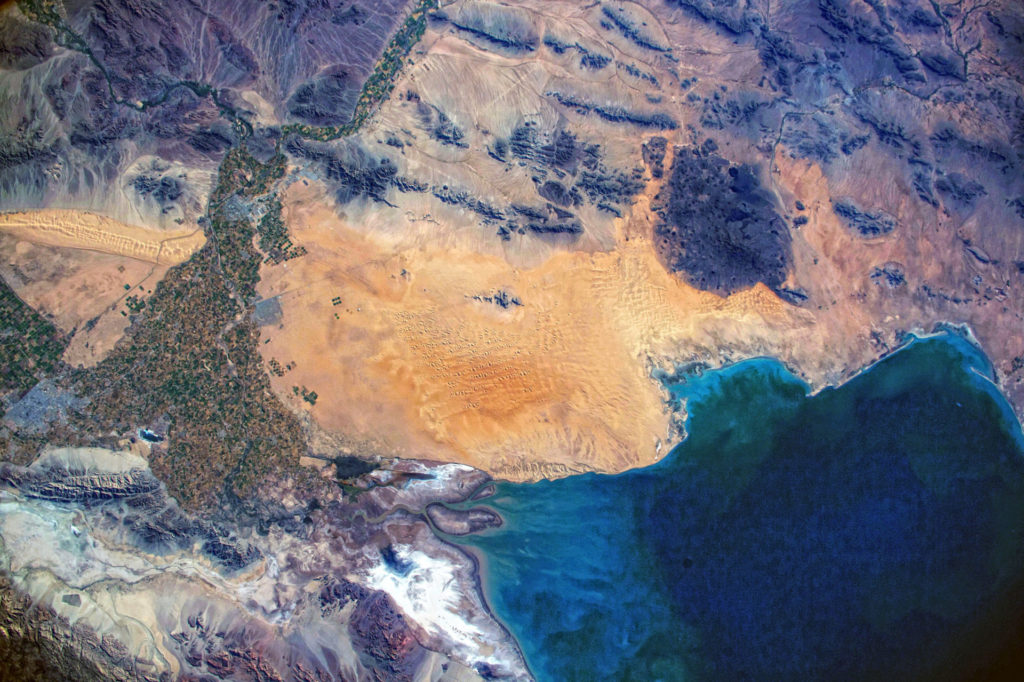

Indeed, to the contrary, most Indigenous peoples cultivate fidelity to the deepest of memories, myths that both link the living to the ancestral past and illuminate the way to the future. Take, for example, the Indigenous peoples of Australia, who thrived as guardians of their world for over 55,000 years. In all that time, the desire to improve upon the natural world, to tame the rhythm of the wild, never touched them. Indigenous people accepted life as it was, a cosmological whole, the unchanging creation of the first dawn, when the primordial ancestors sang the world into existence.
The Europeans who washed ashore on the beaches of Australia in the last years of the 18th century lacked the language or imagination even to begin to understand the profound intellectual and spiritual achievements of Indigenous Australians. What they saw was a people who lived simply, people with modest technological achievements, strange faces and incomprehensible habits. To European eyes, the Indigenous people were the embodiment of savagery.
By the early years of the 20th century, a combination of disease, exploitation and murder had reduced the Indigenous population from well over a million at the time of European contact to a mere 30,000. In little over a century, a land bound together by songlines — through which the people moved effortlessly from one dimension to the next, from the future to the past and from the past to the present — was transformed from Eden to Armageddon. The manner by which the Indigenous peoples of Australia imbued the natural world with a sense of the sacred is not contrary to science but rather an acknowledgment of the complexity and wonder of ecological and biological systems that science illuminates. It suggests that our capacity to forget and adapt to successive degrees of environmental degradation is less a human trait than a consequence of culture.
“Songlines and Dreamings are often held in physical parts of the country, and that assists us to maintain our continuing culture,” says Karen Adams, associate professor in medicine and health sciences at Monash University in Australia and Wiradjuri woman.
“Stories are handed down in families that relate to country,” Adams says, “and often those stories are about social law.”
Using songlines, Indigenous Australians have acquired an encyclopedic memory of the thousands of species of plants and animals across Australia.
‘They wouldn’t have survived if they didn’t have all this practical knowledge and handed down generation after generation,’ says Monash University researcher Lynne Kelly.
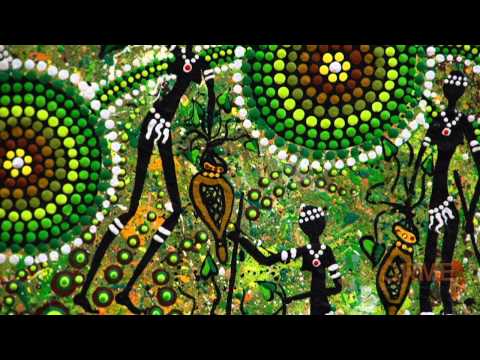
Watch this video on YouTube
Colin Jones, lecturer in Aboriginal History, talks about his culture, his history and his art.
***
As a young man, I was raised on the coast of British Columbia to believe that the rainforests existed to be cut. This was the ideology of scientific forestry that I studied in school and practiced in the woods as a logger. This cultural perspective was profoundly different from that of the local First Nations. Whereas I was sent into the forest to cut it down, a Kwakwaka’wakw youth of similar age was traditionally dispatched during his hamatsa initiation into those same forests to confront Huxwhukw and the Crooked Beak of Heaven, cannibal spirits living at the north end of the world. Is the forest mere cellulose and board feet? Or is the forest the domain of the spirits?
Herein, perhaps, lies the essence of the relationship between many Indigenous peoples and the natural world. The malarial swamps of New Guinea, the chill winds of Tibet and the white heat of the Sahara leave little room for sentiment. Nostalgia is not a trait commonly associated with the Inuit. Nomadic hunters and gatherers in Borneo have no conscious sense of stewardship for mountain forests that they lack the technical capacity to destroy.
What these cultures have done, however, is to forge through time and ritual a traditional mystique of the Earth that is based not only on deep attachment to the land but also on far more subtle intuition — the idea that the land itself is breathed into being by human consciousness. They do not perceive mountains, rivers and forests as being inanimate, as mere props on a stage upon which the human drama unfolds. For these societies, the land is alive, a dynamic force to be embraced and transformed by the human imagination, sustained by memory.
Perhaps this explains why it is impossible for the Haida to forget the color of the sea in the fall, and why the Lakota still hear the thunder of bison crossing the prairies, and why, in the wasted homeland of the Penan in Borneo, shadows still mark the ground where trees once stood in the forest. Just as 18th-century slavers concocted racial fantasies to mask the evil of their trade, perhaps we have learned to shed memory to avoid confronting the actual consequences of our egregious violations of the natural world. Our shifting expectations and dimming memory are less an adaptive trait than a reflexive impulse. If we are responsible for the numbing of our own senses, we can surely awaken to new possibilities as stewards of life, inspired by Indigenous peoples who have walked this path before us, guided by a conscience informed by memory.
Wade Davis is a Colombian-Canadian anthropologist, ethnobotanist, author and world-renowned photographer whose work has focused on worldwide indigenous culture. This excerpt is taken from Memory, a collection of essays exploring the multifaceted importance of individual and collective memory (Peter Wall Institute for Advanced Studies).
h/t – Greanville Post

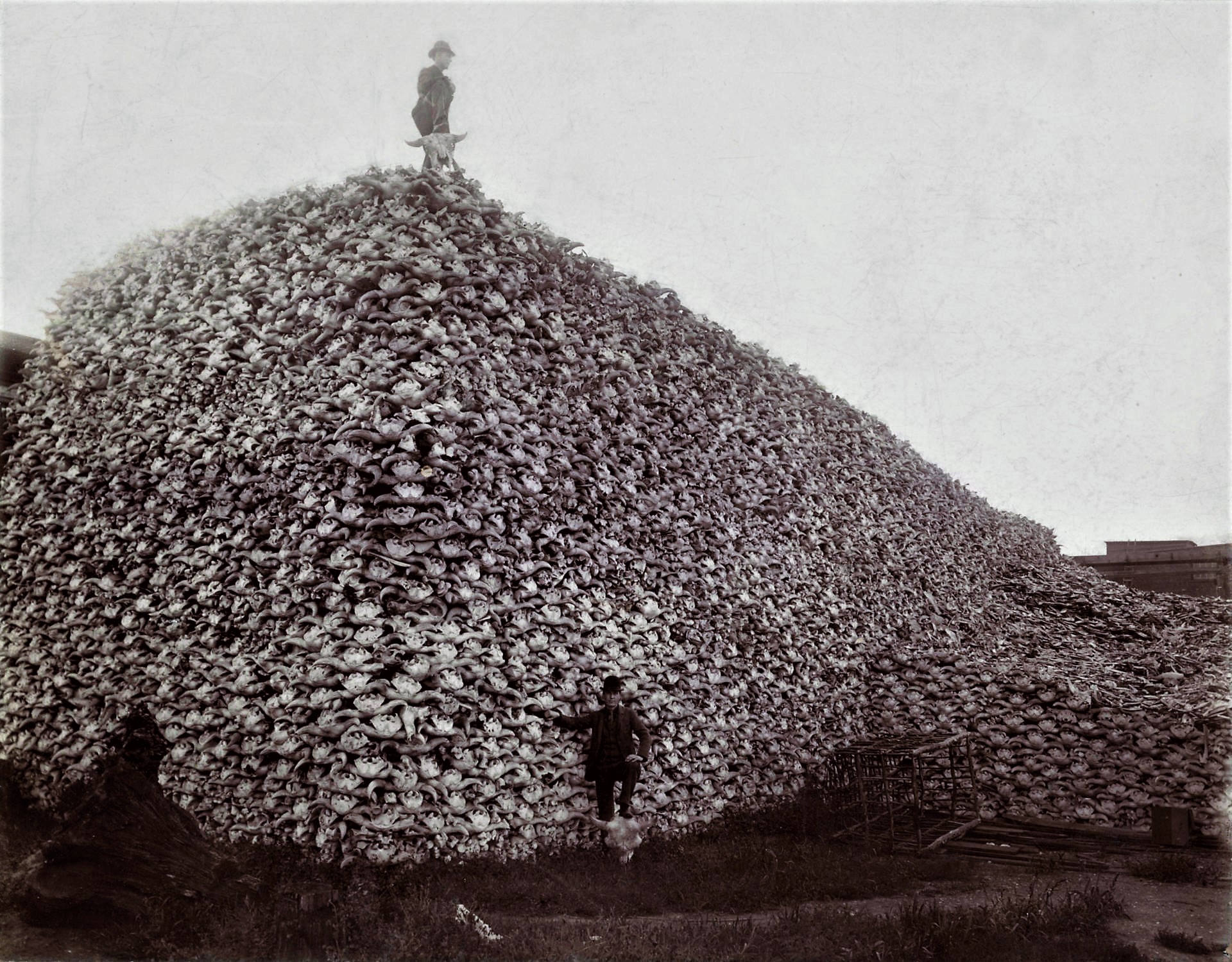








May I translate this into simplified chinese and publish in my personal wechat account with the reference of this web and author. I am a student in sustainable development and plan to publish good articles I came across. Thank you very much.
Please do, and make sure to credit the original author, who is linked at the top.
Thank you!
The number of comments here… Tells a lot. Most people don’t realize what this country was like in 1870 and what happened in the next 40 years. They only know what they see now. There is no sadness for what was done or work to bring it back. They Really dont realize what was here. Thank You for this article and I hope you live a long life filled with people who have learned to Love nature more because of your work and others like you – Mr. Yuan.
Pingback: Half-Earth Biodiversity Conservation Project – EcoJustice Radio
Pingback: Ecological Amnesia: Life Without Wild Things – Snapzu Politics
Pingback: Ecological Amnesia: Life Without Wild Things – Snapzu Earth
Pingback: Chaparral: California’s Misunderstood Biodiversity Hotspot
Pingback: We Need To Clean up Our Oil Act and Introduce Transportation Alternatives – Bicycle-Pedestrian Infrastructure, Trains, Trams, Battery Operated Public Buses | digesthis
Pingback: Bolivia: Global Warming Endangers Kallawaya Healers
Pingback: Aboriginal Dreamtime: The Rainbow Serpent Myth - WilderUtopia
Pingback: How to Persuade Others to Care about Biodiversity? | digesthis